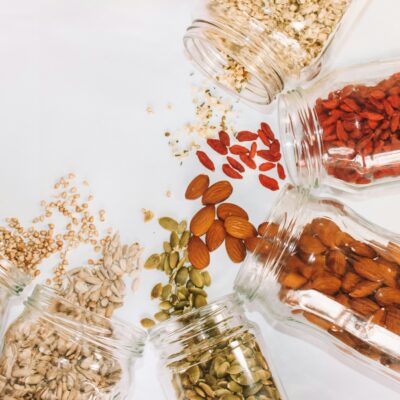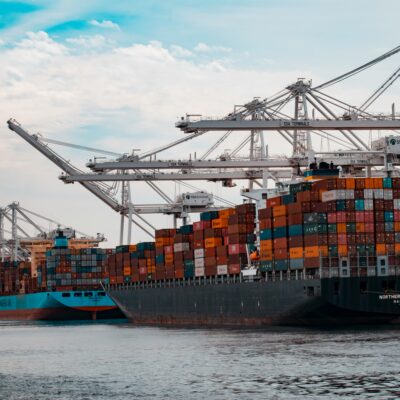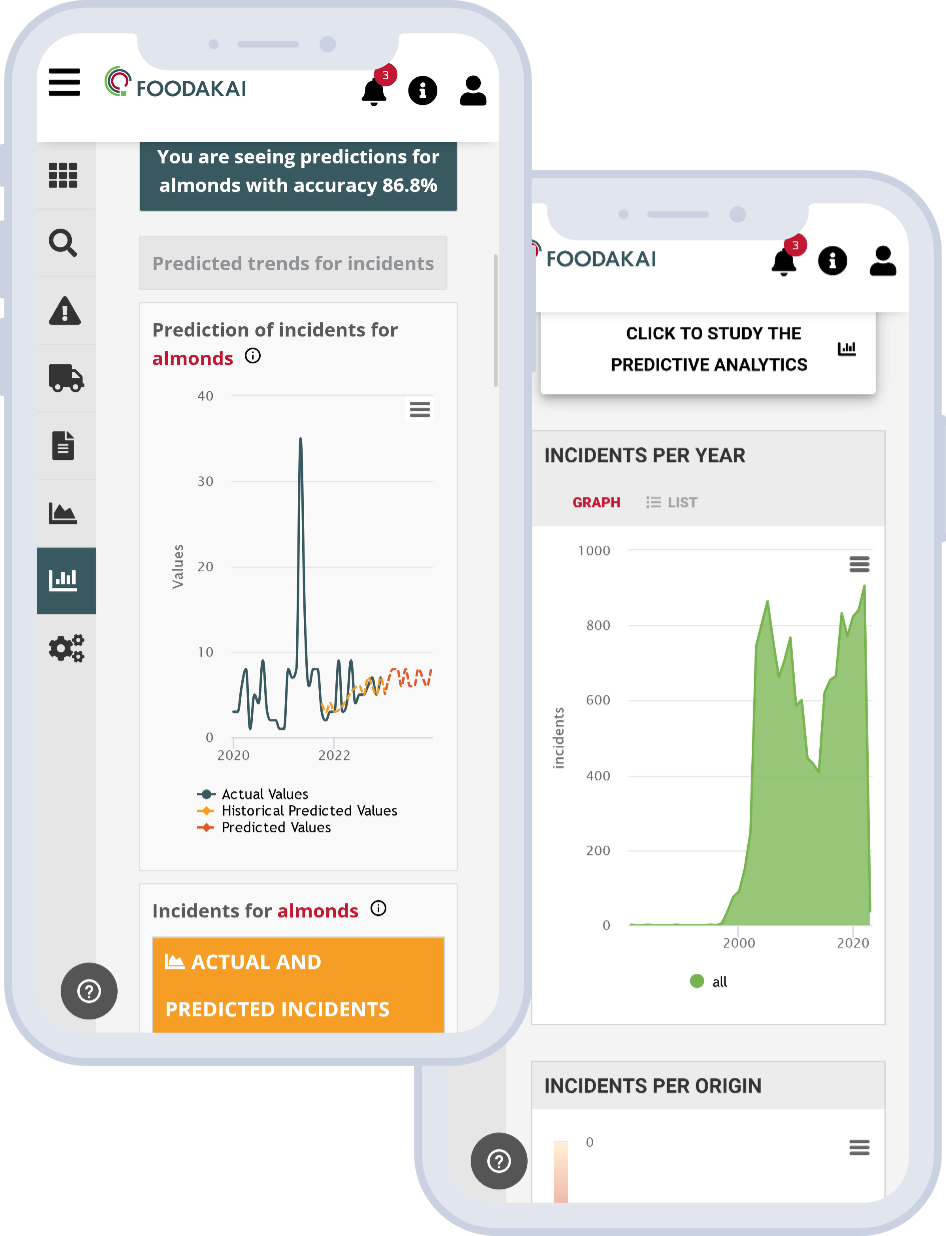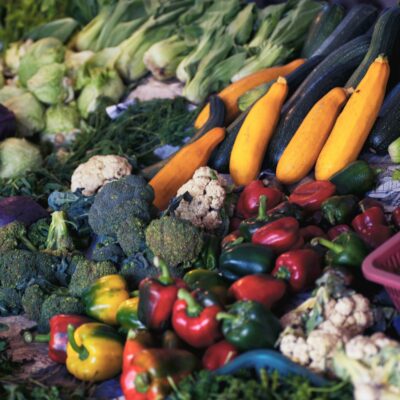
Chlorpyriphos: the rising of the risk of the insecticide and its future impact in the global supply chain
Pesticides are central in ensuring the safety and quality of earth-grown products and sit at the heart of the agrifood sector. From protecting crops from pest and diseases to maintaining the quality of vegetables and fruits, pesticides lead to higher yields and therefore better productivity, revenue and stability in the in agricultural communities.
In order to increase productivity and meet the growing demand, producers are increasingly using more pesticides to maximize yields and prevent products from extreme weather events due to the impact of climate change. However, the negative effects of pesticides can be manifold including environmental damage (soil degradation, water contamination) consumer health risks with residues of pesticides found in food products, and the development of pesticide resistance in some pests that will ultimately require stronger pesticides continuing the cycle of overuse.
Chlorpyrifos is an organophosphate pesticide widely used to control a variety of pests in crops. In recent studies, chlorpyrifos has been the subject of intense scrutiny for its potential risks to human health and the environment. Due to these risks, many countries have restricted or banned its use, including a phased ban in the U.S. starting in 2021. Despite that, it continues to be used in some regions and for certain agricultural purposes and remains of it are often traced in fresh products constituting a major health risk for consumers.
Rising number of food safety incidents due to Chlorpyrifos residues
Over the last five years, more and more food safety incidents, including recalls, border rejections etc. have been announced with the leading cause being residues of Chlorpyrifos found in food products, having traveled through the supply chain.
According to FOODAKAI, the food risk intelligence platform, more than 1500 incidents have been reported attributable to Chlorpyrifos, increasing over the years. In the two years between 2021 and 2023 the number of incidents has increased by 54%.
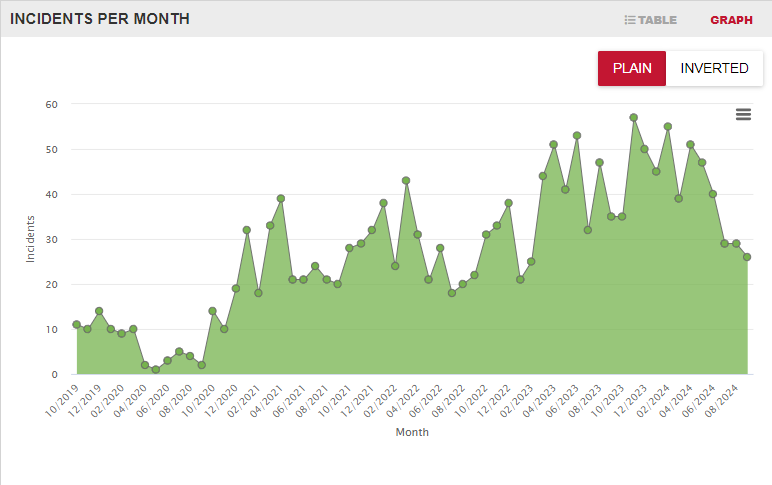
The top 5 fresh products that were most impacted include:
- Oranges
- Cumin
- Rice
- Black-eyed beans
- Coriander
The countries where most incidents were recorded are:
- India
- Turkey
- Egypt
- China
While looking at the past can provide valuable information on the increase of Chlorpyrifos residues across the supply chain, it offers only half the picture. For food & beverage companies that aim to offer the best quality products that 100% safe for consumption, they need to be able to anticipate where incidents are likely to increase in the future.
Tapping into forecasts to reduce future risk
To have the complete view of the risk of Chlorpyrifos for the global supply chain, it is necessary to know how this risk projected to fair in the next months. For that, FOODAKAI indicates that the risk is expected remain although with a slight decrease of 2% compared to last year.
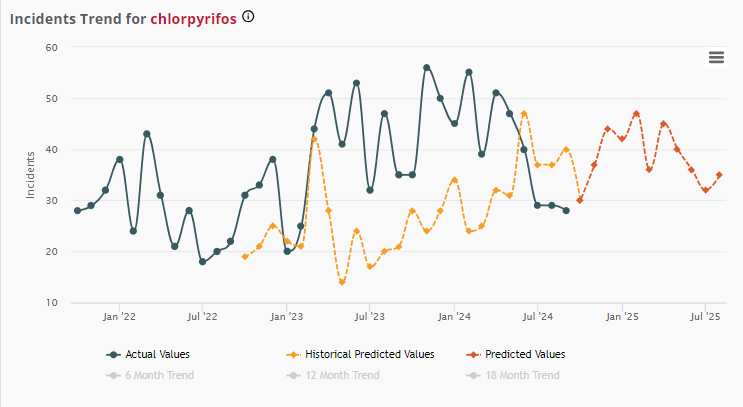
Looking at the geographical areas that are forecasted to have an increased number of incidents based on the platform’s AI-powered models, these include:
- Turkey with an expected increase of 454%
- France with an expected increase of 105%
- Netherlands with an expected increase of 100%
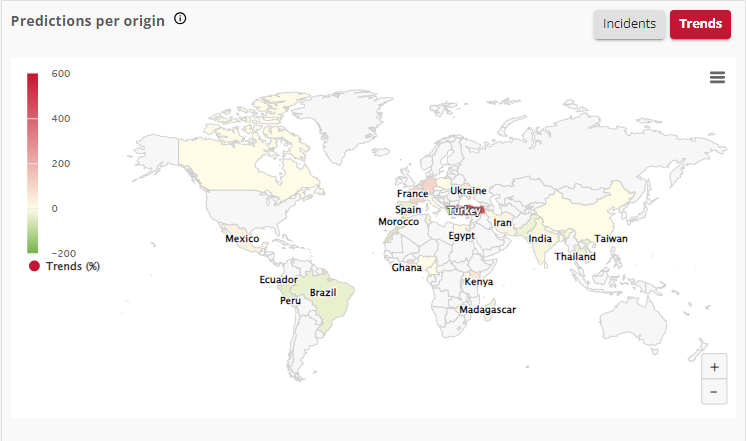
Finally, when it comes to the most prone to be affected products, FOODAKAI highlighted prickly pears, fenugreek leaves and dietic foods, food supplements and fortified food as the products/ingredients with the highest likelihood for incidents.
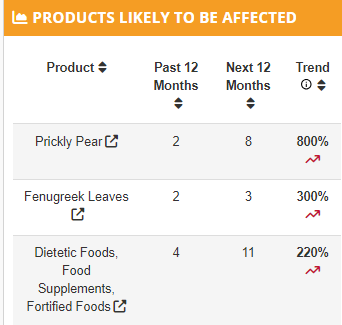
While pesticides such as Chlorpyrifos play a crucial role in protecting crops and ensuring higher agricultural productivity, their overuse and the associated risks cannot be overlooked. The rising number of food safety incidents related to Chlorpyrifos residues highlights the growing concerns about consumer health and environmental impact.
As more countries move toward restricting or banning this pesticide, companies within the food and beverage industry must proactively mitigate these risks. Leveraging advanced forecasting tools like FOODAKAI can help anticipate future incidents, enabling better decision-making to ensure product safety. As the global demand for food rises, the challenge lies in balancing the benefits of pesticides with the need for sustainable, safe agricultural practices.
Do you want to discover how you can access such information? Start here.


